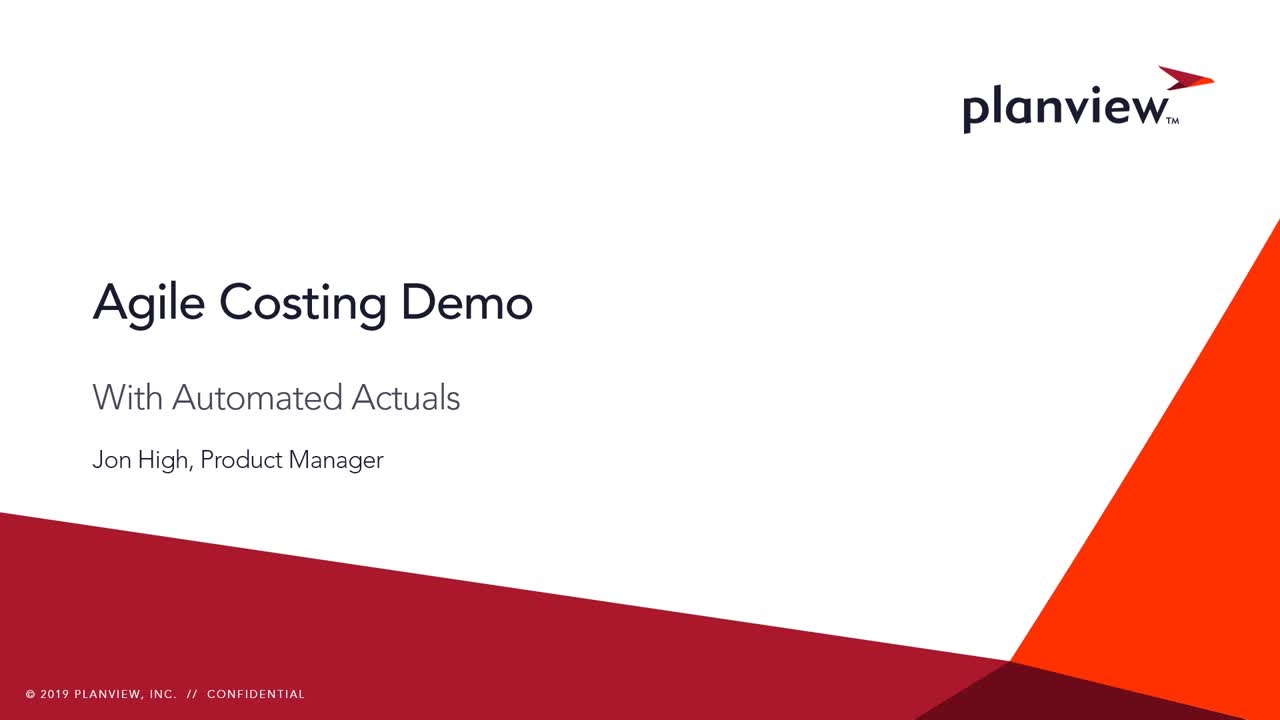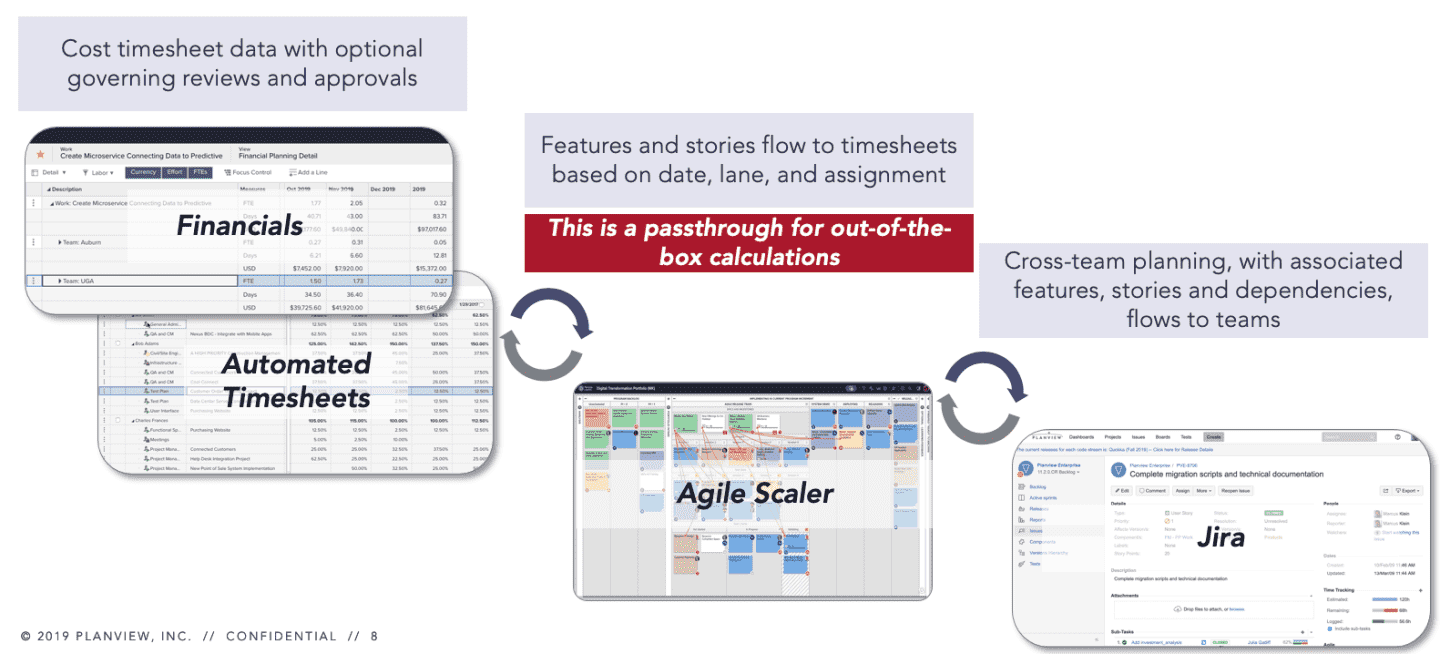Agile Costing
Agile Costing
Finance’s need to understand cost and capitalization often stalls agile scaling efforts. To ensure a clear picture of of agile delivery costs, Planview Enterprise One and LeanKit automate the capture of Agile team activity and translate it into cost and capitalization. Agile and Finance leaders can understand Agile development costs as well as proper CAPEX vs. OPEX categorization, while team members no longer are required to manually fill out their timesheet.
By combining Planview Enterprise One’s financial capabilities with LeanKit’s enterprise Kanban, users can roll-up and translate work status and progress into a consolidated, fully auditable record of actual Agile costs.
- Agile teams use Kanban to manage work flow in a "pull" system
- Team members maintain their cards in LeanKit directly, or integrated to LeanKit through Agile Scaler
- Card activity is summarized to populate Planview Enterprise One timesheets by feature or epic
- Time is allocated based on resource calendars and accounts for existing timesheet entries
- Time allocations are split into capital and expense buckets by feature or epic
- Configurable to the desired level of governance, be it fully automated with no intervention, signed and ready for approval in Enterprise One, or just pre-populated and ready for each team member
- Control which resources Agile Costing applies to by running by Resource Portfolio
Agile Costing Presentations and Demo
|
Timesheets have been a popular approach to costing projects but is it really the correct approach for Agile teams? After all, Agile teams are not organized around projects. They tend to be dedicated and value-focused. They find timesheets disruptive and anything but value added. Is there a better way? |
Watch a short demo of how this works: |
 |
 |
|
Agile teams are focused on managing their flow and delivering value. Each team member keeps their agile work up to date to reflect progress and status. Agile costing leverages these natural activities to translate activity into timesheet entries. Resource timesheets are populated by distributing capacity across the number of in progress, active stories or features. For example, if a given team member has two active, in progress items over their eight hour day, their time will be split into two, four hour entries. Watch a presentation outlining this in more detail: |
|
|
Agile Costing With Automated Actuals |
 |
|
Does your finance team need to track capitalization? When features are added within Planview Enterprise One, they can be identified as eligible for capitalization. For any feature that can be capitalized, any activities performed under it will be split by capital or expense based on the lane of the parent:
For any feature that cannot be capitalized, any activity on child cards is classified as expense. |
Watch a presentation outlining this in more detail: |
|
Automated Capitalization And Expenses |
 |
| Do you have teams using Jira? Do you have teams using ADO / TFS? While we believe that LeanKit is the best Lean and Agile Delivery solution in the market, we understand that you may have teams that are using other Agile solutions. You can still take advantage of our out-of-the-box Agile costing solution by connecting LeanKit to agile team tools through Agile Scaler. |
Watch a presentation outlining this in more detail: |
|
|
 |
Downloadable files
Click the link to the PDF to open it. You can save it from there. Click the PowerPoint file link and it will download. Be sure to save it somewhere easy to find.




